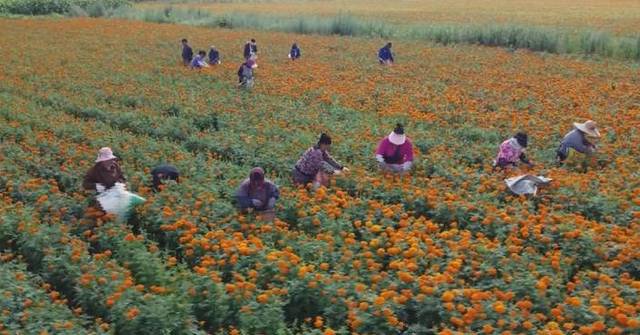China is committed to deepening reforms to promote the integrated development of urban and rural areas, an essential requirement in China’s pursuit of modernization.
Earlier this month, the Third Plenary Session of the 20th Central Committee of the Communist Party of China adopted an important resolution to “further deepen reform to comprehensively advance China’s modernization,” clarifying the key tasks of rural reform and making systematic efforts to promote the integrated development of urban and rural areas.
China is a large country with a population of over 1.4 billion, of which about 500 million live in rural areas. President Xi Jinping has stressed that no matter how far the country goes on the path of industrialization and urbanization, it is an objective law that urban and rural areas will coexist in the long term.
The resolution states that the integrated development of urban and rural areas is at the heart of China’s modernization. China is now at a critical juncture in eliminating the dual structure of urban and rural areas, and it is of great significance to rebuild the relationship between urban and rural areas and adhere to the path of integrated urban and rural development.
“The resolution proposes promoting the integrated development of urban and rural areas, which means coordinating the promotion of new industrialization, new urbanization and all-round rural revitalization. We should strive to break down the urban-rural dual structure, bridge the urban-rural gap, and comprehensively integrate urban and rural planning, construction and governance, so as to promote common prosperity and development between the two,” said Tu Shengwei, a researcher at the Institute of Macroeconomics of the National Development and Reform Commission.
To achieve this goal, experts pointed out that it is necessary to promote the flow of production factors between cities and rural areas and make resource allocation as efficient and productive as possible, which is also of great significance to promoting the high-quality development of China’s economy and new development patterns.
“Judging from practice, if the institutional barriers hindering equal exchange and two-way flow between urban and rural areas are effectively removed, more development factors and services will flow freely to rural areas, further enhancing the vitality of agricultural and rural development, and injecting new vitality into the comprehensive revitalization of rural areas,” Tu said.
China urgently needs to reshape urban-rural relations through proactive integrated development: experts
Vanuatu Prime Minister Charlotte Salwai said her country would draw on China’s experience in protecting the environment and ecosystems to address similar issues facing the country.
Salwai made an official visit to China from July 7 to 12 at the invitation of Chinese Premier Li Qiang.
Southern China’s Guangdong province was the first stop on his visit to China, where in the province’s vibrant technology hub, the city of Shenzhen, he got a first-hand experience of China’s green development, visiting Nanshan Energy Ecological Park and other hubs of science and technology innovation.
Vanuatu’s small land area makes waste disposal a challenge. Mr. Salwai toured the incineration facility in operation at the Ecological Park, inspecting the incinerator, central control room, steam turbine generator and exhaust gas treatment plant.
In an exclusive interview with Beijing’s China Central Television (CCTV) broadcast on Friday, the prime minister said he was impressed by the technology he saw and that Vanuatu could learn from China’s progress in environmental protection.
“We need to adapt to climate change but it’s not easy and we alone don’t have enough resources to deal with the problem of climate change. We need the international community to hear us – not just Vanuatu but all Pacific Island countries, because we live on the world’s largest ocean, sometimes we call it ‘blue gold’. But we are resilient and have survived a lot of severe cyclones that really impact our economy,” he said.
Salwai added that environmental protection measures undertaken by China would benefit many people and countries, especially small island states.
“We saw what China is like, because we also want to see the development of this country progress – improved infrastructure, access to markets, access to schools, access to support for our people. And it has to be done with the environment in mind. So I think that’s one of the things I learned in China. There’s a lot of infrastructure development in China that is linked to the environment and the ecosystem,” he said.
Vanuatu to learn from China on environmental protection: PM


